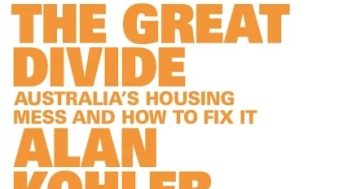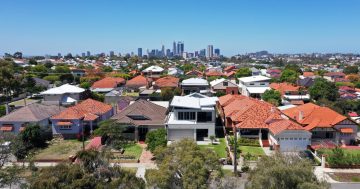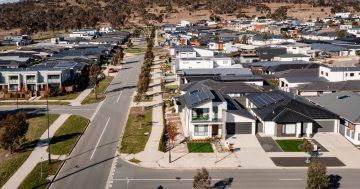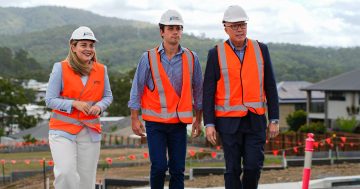Nassim Khadem* says the Reserve Bank of Australia (RBA) has confirmed what’s long been suspected, that HomeBuilder and first home buyer grants made housing less affordable.
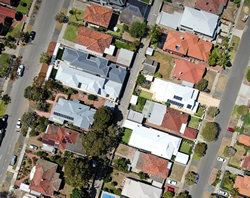 Government subsidies such as first home buyer grants and HomeBuilder have boosted demand for homes and helped push up house prices, with “pervasive” impacts on housing outcomes for some Australians, according to the Reserve Bank.
Government subsidies such as first home buyer grants and HomeBuilder have boosted demand for homes and helped push up house prices, with “pervasive” impacts on housing outcomes for some Australians, according to the Reserve Bank.
“Policy matters, especially in the short term,” Assistant Governor Luci Ellis said.
“Whether it’s time-limited subsidies bunching demand and boosting prices, or the interplay between low yields globally and rental yields locally, policy can have pervasive effects on housing outcomes.”
Speaking at the UDIA National Congress Sydney on Wednesday, Ms Ellis said HomeBuilder and other subsidies lifted the number of first home buyers for a period during the pandemic.
“At the margin, this reduced the number of people wanting to rent,” she said.
“At least some of the people who moved out of share houses to live with their partner would have done so in a newly purchased home.”
She noted that solid rates of home-building during the past 12 months had been due to very low interest rates as well as government grants, such as the “raft of subsidies and other incentives for home construction, as well as support for first home buyers during the pandemic”.
“In combination, these subsidies have been quite sizeable in some cases,” she said.
While it was difficult to disentangle how much of the increase in demand for housing has reflected temporary subsidies and the current low level of mortgage rates versus the shift in preferences for people to live in their own homes, she noted government subsidies had sparked a big surge.
“It is clear that the time-limited nature of HomeBuilder and some other subsidies induced a temporary surge in building approvals for detached homes and renovations,” Ms Ellis said.
“We estimate that about one-quarter of building approvals during this period were supported by HomeBuilder, though many of these would have happened anyway.”
Ms Ellis said that, even now, after eligibility for these subsidies has closed, these categories of building approvals have remained higher than immediately before the pandemic.
Over time, though, that additional surge in building approvals from HomeBuilder and other subsidies will have been worked through and would no longer be a support for the level of dwelling construction.
“As interest rates increase, the boost to demand from the current low interest rates will also wane,” she said, noting “it is likely that buyer interest in new homes will ease as well”.
Labor’s ‘Help to Buy’ scheme could leave some first home buyers at risk
CoreLogic’s research director, Tim Lawless, says many home-purchasing decisions were brought forward to take advantage of the swathe of home buying grants and incentives over 2020 and 2021.
He noted that the incoming Labor government’s shared-equity scheme, which allows an eligible first home buyer to share up to 40 per cent of the purchase price with the government, is also likely to be popular with prospective home buyers.
He said that, with a cap of 10,000 places, the scheme — known as “Help to Buy” — could be quickly oversubscribed.
However, Mr Lawless warned anyone considering the scheme should be aware of the risks associated with buying on such a small deposit.
“With the housing market probably heading into a downturn over the coming year, or years, some buyers may find their home is worth less than the debt held against it,” he said.
“It’s important to know if the government will share in the downside risk if the property is sold while in a negative equity situation.”
RateCity research director Sally Tindall said the Help to Buy scheme would give people on lower incomes “an immediate leg up into a property market that might have otherwise been out of reach”.
However, she also warned first home buyers that “taking out a loan with a small deposit can be incredibly risky, even when the government is co-buying with you”.
“While it’s an amazing feeling to be able to hammer a nail in the wall without having to get permission first, when your roof starts leaking or your hot water system blows up there’s no-one to pass the bills to,” she said.
And she noted that, with interest rates on the rise, and property prices forecast to drop over the next couple of years, buyers could themselves be “trapped in a home buying scheme for a lot longer than expected”.
Pandemic fuelled a renovation boom and reduced the premium on inner-city living
Ms Ellis noted that renovation activity had also increased as people who couldn’t afford bigger homes made their own more liveable.
“Desire for more space is one thing. The ability to get it is another.
“For some, this choice became more feasible due to other pandemic-related shifts,” she said.
“The widespread shift to working from home reduced the premium on place.
“If you don’t need to commute to employment centres as often, living further out becomes more tenable.
“It then becomes more feasible to get more space for a similar price, by trading off place.”
She said that, while the premium for being close to the city centre remained, it was “much smaller now and is closer to the premium for being in a middle-ring suburb”.
Ms Ellis also noted that many people could not work from home because of the nature of their work.
“The ‘laptop class’ of people who can mostly work from home on an ongoing basis are, in fact, a small minority — a minority, who, prior to the pandemic, were not evenly distributed across geography,” she said.
“Rather, they were concentrated in inner-urban, higher-priced areas.”
Data from the 2020 HILDA survey suggests that about 60 per cent of people who lived within five kilometres of a city centre could work from home, but less than 40 per cent of those who lived more than 20km out could do so.
Ms Ellis said the other big factor that fuelled demand for housing was that pandemic lockdowns had created a greater sense of home among Australians, with more people opting to live in their own spaces.
“Spurred by the experience of lockdown and self-isolation, many people understandably wanted a bit more space, and perhaps a garden,” she said.
This saw a decline in average household size.
But demand for homes increased.
Even though population growth declined off the back of closed international borders — there were up to 200,000 households that didn’t arrive in Australia over the past two years, who would have done so if population growth had stayed where it was before the pandemic — this was offset by local factors.
“Across the whole Australian population of more than 25 million people, a decline in average household size … would add about 140,000 households,” she said.
Housing stock predicted to grow faster than population growth
Ms Ellis said that — with the flow of overseas migration coming to an effective halt while the international borders were closed — people from parts of Australia that were not in lockdown at the time tended not to move to cities that were in lockdown.
“So this wasn’t so much about city people wanting tree changes, but rather the interruption of the longstanding trend of others moving to the big smoke,” she said.
“Regardless of the source of the change in population flows, though, it is undeniable that, in many regional housing markets, prices and rents have increased considerably.”
She said internal migration was returning to a more typical pattern and overseas migration was slowly starting to pick up.
“Overall population growth is now expected to revert to close to pre-pandemic patterns by 2024,” Ms Ellis said.
“It will take a little while for students and other migrants to return in the numbers that were seen before the pandemic.”
However, she said, the Reserve Bank’s expectation was that construction of new homes would remain solid for the next few years.
“We expect [housing stock] will expand at rates similar to the first decade of this century, but not as much as during the boom in apartment building in the second half of the 2010s,” she said.
“This is likely to still be enough to keep the housing stock growing faster than the population.”
*Nassim Khadem is an award-winning journalist, reporting on business news across online, radio and TV for the ABC.
This article first appeared at abc.net.au



